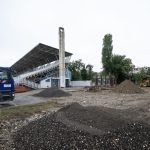You’ve definitely seen his statue, you’ve probably taken a photo of him, you may have even found yourself sitting underneath him in a desperate attempt to catch your breath in the summer sun, but do you know who he is? Get to know one of Dubrovnik’s most celebrated figures…
Ivan Franov Gundulic was born on the 8th of January 1589 and was known affectionately by the nickname Macica. Gundulic was the most prominent Croatian Baroque poet from the Republic of Ragusa (Dubrovnik). His best known works are perfect examples of rhetorical excess and Baroque-style richness of the time, they include the religious poem Tears of the Prodigal Son, the epic poem Osman and the pastoral play Dubravka.
He was born into a wealthy noble family, the son of a senator, diplomat, Ragusan envoy to Constantinople and Councilor of the Republic to the Pope Gregory VIII. Owing to his background and riches, the young Gundulic received an education that could be envied by many, likely studying philosophy and humanities alongside big names of the time such as Silvestro Muzio and Ridolfo Ricasoli. Following that, he studied Roman law and went on to hold offices for the Great Council of the Republic, becoming a member of the Great Council at the tender age of nineteen. He held the temporary function of the governor of Konavle twice, in both 1615 and several years later in 1619. By the age of 30 he was married to Nicoleta Sorkocevic (Sorgo) with whom he had three sons, Frano, Mato and Sisko, as well as two daughters, Dziva and Mara.
He embarked on his later famed literary career by staging melodramas and writing poems which soon grew in their respective popularities in Dubrovnik. Referring morbidly to his earliest work, now unfortunately lost, as a ”brood of darkness”, he only published his greater works. He rewrote David’s Psalms and some religious poems, and they, back in 1621 were to be among his first publications. A year later in 1622, he went on to pen one of his most famed works, Tears of the Prodigal Son (Suze Sina Razmetnoga), in which Gundulic presented what he believed to be the three basic principles of Christian faith:, sin, repentance and redemption through life and death, purity and sin and the notions of Heaven and Hell. Gundulic made himself known for his often emotive works, even writing a poem on the occasion of the wedding of Ferdinand II of Tuscany.
The most famous of Gundulic’s plays is Dubravka, written in 1628, where he writes passionately about Dubrovnik’s former glory with some of the most famous, poignant verses to exist in Croatian literature even to this day, an exerpt of this, which you may recognise is: ”O lijepa, o draga, o slatka slobodo” (Fair liberty, beloved liberty, liberty sweetly avowed).
Osman, first printed in Dubrovnik in 1826, was arguably his greatest work. In it, Gundulic presents the contrasts between Islam and Christianity, the Europeans and the Turks, East and West, and his own personal interpretation of the difference between freedom and slavery. In Osman, Gundulic is firmly rooted in the literary traditions of the Croatian Baroque in Dubrovnik, and by presenting what he saw as an enormous contrast of struggle between Islam and Christianity, Gundulic continued the glorification and admiration of the resistance of the invading hoards of Ottomans. Throughout this work, he continually reminds the reader of how the world is transient.
Like several other writers from Dubrovnik, Gundulic wrote in Shtokavian dialect, which is distinctly different from both verbal and written modern day Croatian language. Due to this, Gundulic finds himself controversially claimed by Serbian scholars and has since been included in the ”100 most prominent Serbs” list compiled by the Serbian Academy of Sciences and Arts, with his works even being included as part of Serbian literature by the Matica Srpska. He is only one among various other Ragusan writers wrongly included in the fifth volume of ”Ten centuries of Serbian literature” (Deset vekova srpske knjizevnosti). Croatian scholars and Matica Hrvatska vehemently reject any Serbian claims to Ivan Gundulic, or to any other Croatian writer.
From 1621 until his death in the December of 1638, Gundulic held various offices within the city government, becoming a senator in 1636, a judge in 1637 and finally, a member of the Small Council in 1638. Ivan Gundulic passed away on the 8th of December 1638 from a fever caused by an inflammation in his ribs, he was buried in the Franciscan church in Dubrovnik. A little known fact about the former Republic of Ragusa was that it didn’t allow monuments to individuals, nor did it have any honourary citizens, so it wasn’t until much later on the 25th of July 1893, long after Dubrovnik fell under Austrian rule, that a monument to Ivan Gundulic by the sculptor Ivan Rendic was unveiled in Poljana, the Old City of Dubrovnik’s largest square.
Today, Ivan Gundulic and his timeless works are celebrated, keeping his presence very much alive in Dubrovnik. He can even be found on the Croatian 50 kuna banknote.








